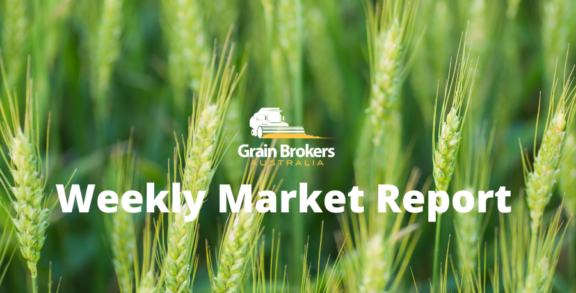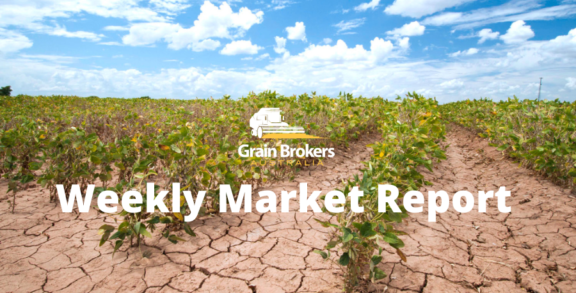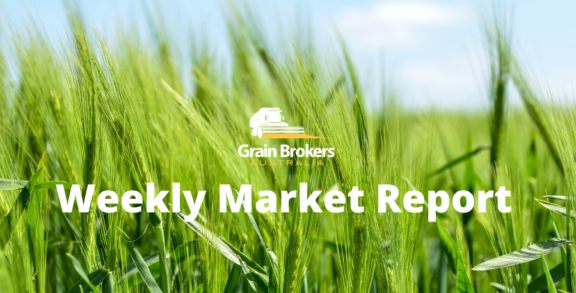

by Peter McMeekin – 6th November, 2018
We have all heard of bull markets and bear markets. Now we have ‘tweet’ markets after a post on Twitter by ‘The Don’ sent United States (US) futures markets sharply higher last Thursday and Friday (US time). The rally was based on the hope of progress in the trade negotiations with China.
President Donald Trump said that he had spoken with his Chinese counterpart, President Xi Jinping, and stated that the trade discussions were “moving along nicely” and that meetings were being scheduled during the G-20 summit due to take place in Argentina later this month.
Soybeans have been the commodity most affected by ‘Don’s Party’ since it began earlier this year. As news of a possible resolution to the trade impasse surfaced on Thursday, the bean sellers disappeared, and short covering sent the futures market more than 3 per cent higher. It hit a two-week high on Friday before late selling pushed the bourse lower into the close, but still up for the session and substantially up the week.
Time will tell if there is real progress or if this is simply Trump trying to appease his Midwest supporter base and talk up the stock market ahead of the US mid-term elections. Americans go to the polls on Tuesday and whilst Trump is not on the ballot paper the elections are considered a referendum on his performance since winning the 2016 presidential race.
With the Democrats expected to take control of the House, and possibly the Senate, these elections will most likely shape the final two years of ‘The Don’s’ presidency. The Democrats will use the power to severely limit what he can accomplish before the 2020 presidential elections.
Wheat had its own story with mounting concern over US winter wheat acres, either because it’s simply too wet to plant or because the rain-delayed bean harvest is pushing the wheat seeding program past final plant dates for crop insurance.
The Multiple Peril Crop Insurance (MPCI) policies must be purchased prior to planting and protects against the loss of crop yields from all types of natural causes including drought, excessive moisture, freeze, hail and disease, or the loss of revenue due to declines in prices of agricultural commodities. The US government subsidises grower premiums.
Similar products are available here in Australia, but they are quite costly. Weather certificates are a cheaper option gaining traction across many industries and are now available in agriculture. They are basically a derivative that protects income against a specified weather event such as too wet, too dry, too hot or too cold. Payments are triggered automatically based on Bureau of Meteorology data nearest your property, so there is no claim paperwork to be completed. There are rumours that the government is looking at providing tax incentives for weather certificates as part of their national drought initiative.
The wheat harvest in Argentina is progressing quite slowly with around 4.5 per cent of the total area harvested as of 1st November. Whilst yield reports are improving, the average yield is currently running at 1.6 metric tonne per hectare (mt/ha). The Buenos Aires Grain Exchange (BAGE) pared their wheat production estimate last week by 0.3 million metric tonne (MMT) 19.4 MMT. This compares to 18.5MMT last year.
The production downgrade was reportedly due to frost and hail damage. There were more frosts last week that could further damage crops in the later maturing provinces in the south of the country. Additional reductions to production numbers are distinctly possible as a result.
Argentinian wheat prices are reported to be quite firm in the nearby with exports focused on Brazil. Once significant new crop tonnage is available for export, prices are expected to better reflect export parity values which are around US$30 lower. Exports are currently forecast at 14.5MMT for the 2018/19 season. Brazil will take approximately 6MMT leaving around 8.5MMT that needs to find a home internationally.
Meanwhile, the Russians are at it again, saying that it may temporarily suspend wheat loading at five facilities in Rostov, and could do the same for the Krasnodar region, supposedly due to quality problems. However, the government is clearly concerned about domestic supply and prices, so it is more likely intended to slow the pace of exports without officially imposing restrictions.
There are signs that price is starting to swing exports away from Russia with sales increasingly negotiated as ‘optional origin’. In the event that Russian supplies tighten, this gives the exporter the option of sourcing their grain from other origins such as the EU, US or Argentina. This was supported by US export sales which are showing signs of improving on the back of a lower US dollar.
In normal years Australia would also be on that list but inelastic demand should account for the majority of our meagre exportable wheat surplus over the next twelve months. The same goes for barley, and canola exports will be negligible after domestic demand is taken into account.
The final Australian export numbers are in for the 2017/18 marketing season (October to September). Wheat exports in September were 865 thousand metric tonne (KMT), bringing the total for the twelve-month period to 13.8MMT. The wheat emphasis was on quality with Iraq being the biggest destination in September, accounting for almost 310KMT, while Indonesia took only one panamax cargo for the month. September barley exports were just under 90KMT, bringing the marketing year total to just over 6.1MMT.
Back to the US and it appears there is plenty to play out on the world stage regarding the China-US tariff war. China will have to come to the table at some point. They have more to lose economically as it exports far more to the US than it imports from the rival country. On the flip side, Trump has much to lose politically as President Xi Jinping will not be punished at the ballot box if and when the tariffs begin to harm ordinary people, especially the US farmer. This week’s mid-term election results will certainly be quite revealing from a global agricultural trade viewpoint.





